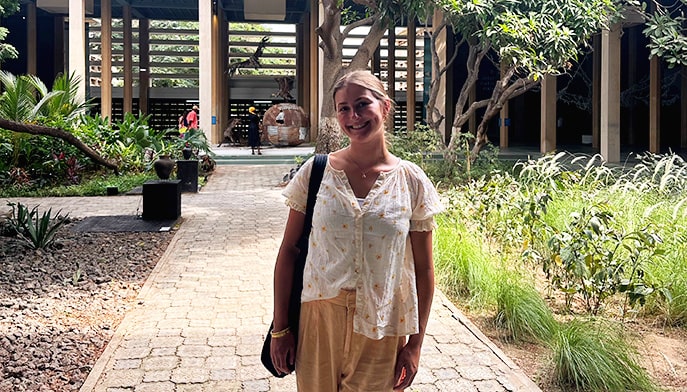Study finds that this understudied region may experience significant climate changes, impacting agriculture, the economy, and infrastructure.
Scientists from Fairfield University and Scripps Institution of Oceanography at UC San Diego investigated projected precipitation trends over northern Mexico and found that the frequency of extreme precipitation events is expected to double throughout the region, exacerbating the flood risk for vulnerable communities there.
Collectively, the recent study results, published in the Journal of Climate, suggest that the extreme precipitation-related dangers that the region faces, such as flooding, will increase significantly by the end of the century, with implications for the agricultural sector, economy, and infrastructure.
The region accounts for 27 percent of Mexico’s gross area dedicated to agriculture and 32 percent of its agricultural revenue; without proper adaptation, precipitation changes caused by future warming could lead to major social and economic disruptions.
Northern Mexico is home to more than 32 million people and is of significant agricultural and economic importance for the country. The region includes three distinct hydroclimatic regions, all of which regularly experience severe dryness and flooding. They are highly susceptible to future changes in precipitation.
To date, little work has been done to characterize future trends in either mean or extreme precipitation there. Study collaborators said their work is intended to fill that gap.
“This research also highlights the issue of climate data equity,” said lead author Robert H. Nazarian, PhD, an associate physics professor at Fairfield University. “There has been very little focus on regions and countries for which there are few modeling centers. Yet such regions will nevertheless experience the effects of a changing climate, and its impact on populations and migration. Our analysis of future projections of precipitation to include regions outside those traditionally studied is important to ensure these areas have access to climate information in order to adapt to potential future changes.”
Co-author, Nick Lutsko, PhD, a climate scientist at Scripps Institution of Oceanography, added, “This work is exciting because we were able to produce some of the first projections of precipitation change over this region, and also provide some insight into what causes these changes. We took advantage of high-resolution climate simulations originally designed to study climate change over the U.S. and used it to provide detailed projection of changes in mean and extreme precipitation over Northern Mexico.”
Using high-resolution climate model simulations that have been tested against observations, the study found that these hydroclimate extremes are likely to be exacerbated in a warming climate. Drought seasons are projected to receive significantly less precipitation and flood seasons significantly more (roughly 10 percent) by the end of the century.
“Besides changes in the net precipitation, we also found that the overall distribution of rainfall throughout the year is likely to change over northern Mexico’s major cities and agricultural centers,” said co-author Noel Brizuela, PhD, a Scripps Oceanography alumnus and postdoctoral scientist at Columbia University’s Lamont-Doherty Observatory. “This provides valuable insight on the types of adaptations needed to sustain quality of life over the next few decades. We hope that the city-level granularity in our analysis will be useful to resource managers and decision makers.”
The simulations suggest that some of the changes in precipitation over the region can be related to the North American Monsoon, with the monsoon starting later in the year and lasting several weeks longer. Results also suggest that the frequency of extreme precipitation will increase, with the strongest storms becoming 20 percent more frequent per degree of warming. These results suggest that this understudied region may experience significant changes to its hydroclimate through the end of the century that will require significant resilience planning.
Fairfield University student Brody Matijevic ’25, alumnus James Vizzard ’23, and alumna Carissa Agostino ’23 also served as co-authors of the study.



